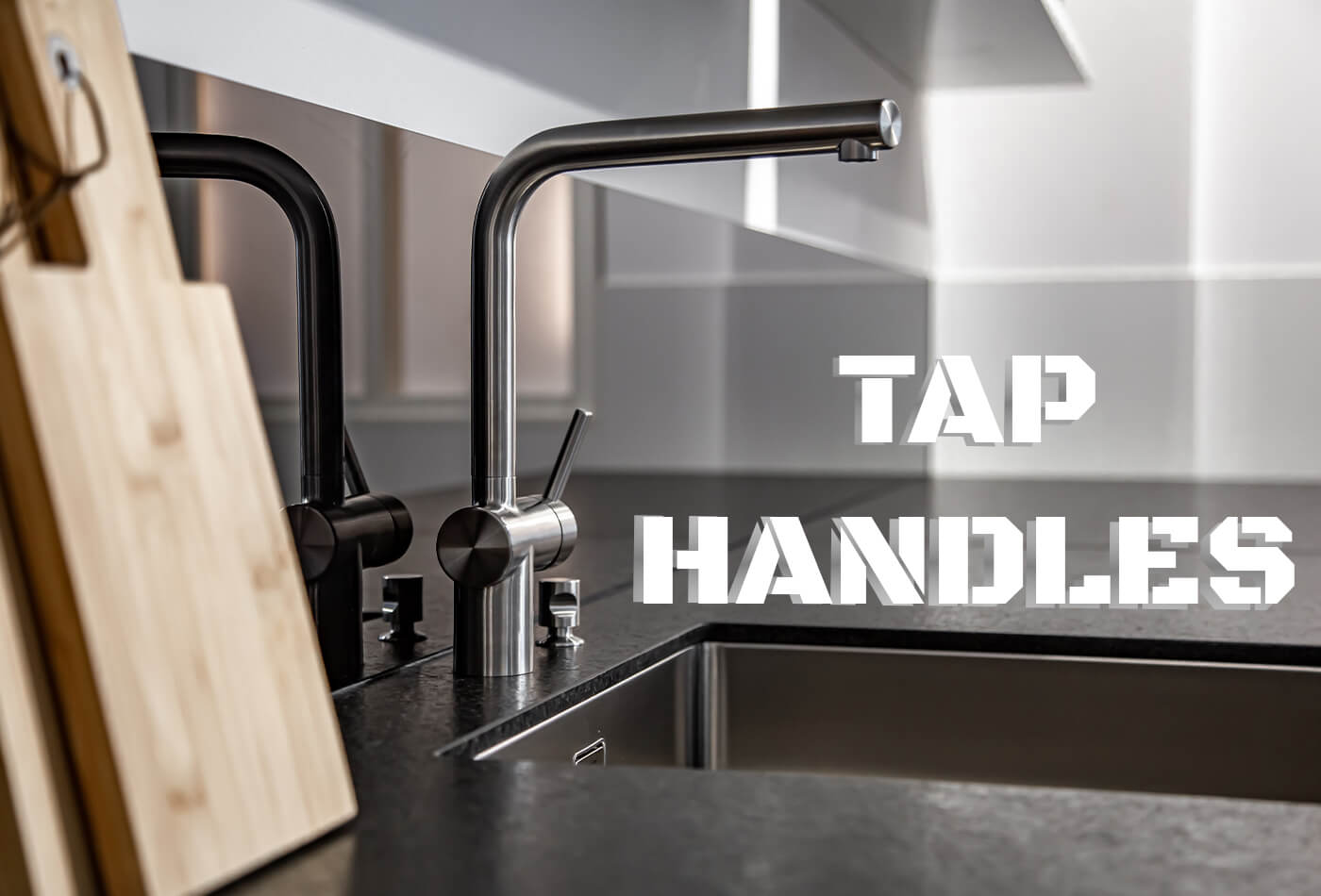Table of Contents
- Can You Just Replace the Tap Handles?
- What Are the Handles on a Tap Called?
- Can You Just Change Tap Heads?
- How to Fix a Loose Tap Handle in the UK?
- Are Sink Handles Called Tap Handles?
- Are All Tap Handles the Same?
- What Size Are Tap Handles?
- Bathroom Tap Handles: a Touch of Style and Functionality
- How to Remove Old Tap Handles?
- Conclusion: Keeping Your Taps Flowing
The unassuming tap handles play a vital role in our daily lives. With a simple twist or push, we control the flow of water; there is a necessity we often take for granted. But what happens when your trusty tap handle starts to leak, drip or become stiff? Fear not! Replacing a tap handle is often a straightforward and budget-friendly DIY project. Here, you need to know everything you need to know about the tap handles, from troubleshooting common issues to replacing them yourself.
For more collections, call 03330 113 5868 and get a free quote.
Can You Just Replace the Tap Handles?

In most cases, the answer is yes! Replacing a tap handle is a much more cost-effective solution than replacing the entire faucet. Tap handles are designed to be interchangeable, allowing you to restore functionality and potentially update the aesthetics of your faucet without a major plumbing overhaul.
What Are the Handles on a Tap Called?
The handles on a tap are universally known as tap handles. In some regions, you might also hear them referred to as tap levers, faucet handles, or simply handles. Regardless of the term used, they all serve the same purpose: controlling the flow of water from your faucet.
Can You Just Change Tap Heads?
Handles are often referred to interchangeably with tap heads. However, there is a slight distinction. The tap head controls the entire assembly of the water flow, including the handle itself, the cartridge or valve inside, and the spout where the water comes out. While you can't typically replace the entire tap head without professional assistance, replacing the tap handle itself is often a manageable DIY Task.
How to Fix a Loose Tap Handle in the UK?

A loose handle is a common issue, especially in older faucets. Here is how to fix it in the UK:
Identify the Handle Type
Most handles in the UK are secured with a grub screw located at the base of the handle. Some newer models might have a button or a cap concealing the screw.
Tighten the Grub Screw
Using a flathead screwdriver, locate and tighten the grub screw located at the base of the handle. Be gentle but firm to avoid stripping the screw.
Test and Re-tighten if Necessary
Turn the water supply back on and test the hand. If it is still loose, you might need to tighten the grub screw again slightly.
RITRARRE QFIT FLEX RETRACTABLE TAP
£515.00 Ritrarre Qfit Flex Retractable Tap is a versatile addition to any kitchen, offering both functionality and style. Available in a range of finishes including brushed nickel, chrome, and matte black, it seamlessly integrates with various kitchen designs. Its retractable hose… read more |
GRANDE PULL OUT TAP
£518.00 Grande Pull Out Tap is a stylish and versatile addition to any kitchen, boasting a sleek and contemporary design with clean lines and a polished finish. Available in a variety of colours including chrome, brushed nickel, and matte black, it… read more |
MOULINS CLASSIC TAP
£378.50 A home is much more than just a four-walled structure. The kitchen is a room filled with memories and emotions. Kitchen Worktops are what you build with the love of your life and where you watch your children cook and… read more |
Replace the Cap or Button
If your handle has a button or cap concealing the grub screw, carefully pop it back into place.
If the handle remains loose after these steps, consider replacing the tap handles completely.
Are Sink Handles Called Tap Handles?
Yes! Regardless of the location, bathroom sink, kitchen sink or utility sink, the control knobs for water flow are called tap handles. This universal term simplifies communication and ensures everyone understands what you're referring to.
Are All Tap Handles the Same?
Handles come in a variety of styles, materials and finishes. However, they are not universally interchangeable. Most handles are designed to fit specific faucet models or cartridge types. It is crucial to ensure compatibility before purchasing a replacement tap handle.
What Size Are Tap Handles?
Handle size is typically determined by the diameter of the hole where it connects to the faucet body. Common sizes include 8mm, 10mm, 12mm and 15mm. Additionally, the handle's overall length and design can vary. When selecting a replacement tap handles, measure the diameter of the hole and consider the overall style to ensure a proper fit and aesthetic match.
Bathroom Tap Handles: a Touch of Style and Functionality
Bathroom faucets often feature two separate handles, one for hot water and another one for cold. These handles can be lever style, knob style or even touchless depending on the faucet model. Replacing the handles in your bathroom is a great way to add a touch of style and update the look of your vanity without a significant investment
How to Remove Old Tap Handles?

Here is a step-by-step guide on how to remove old handles
Stop the Water Supply
Locate the isolation valve for the specific faucet and turn it off completely. This ensures no water flows while you work on the handle.
Identify the Handle Removal Method
Most handles are secured with a grub screw at the base. However, some newer models might have a button or a cap concealing the screw or require a different removal method based on the faucet design. Consult the worktop expert team for assistance.
Remove the Grub Screw
Use a flathead screwdriver that fits the screw head snugly, then loosen the grub screw located at the base of the handle. Don't tighten to avoid stripping the screw.
HENRY HOLT COLLECTION TAP
£299.00 Henry Holt Collection Tap an exquisite tap designed to complement the aesthetic appeal of modern homes with sheer elegance and functionality. Crafted with meticulous attention to detail, this tap transcends the ordinary, adding a touch of luxury to your kitchen… read more |
DAVANTI TAP
£342.00 Davanti Tap gives you a sleek and stylish addition to any kitchen or bathroom. Crafted with precision and finished in brushed steel, this tap boasts durability and contemporary elegance. With its single lever design, it offers ease of use and… read more |
Remove the Button or Cap
If your handle has a button or cap concealing the screw, carefully pry it off using a flathead screwdriver or your fingernail that depends on the design.
Gently Pull the Handle Off
Once the screw is loosened or the button/ cap is removed, gently pull the handle straight up to remove it from the faucet body. Be careful not to wiggle or twist excessively, as this could damage the faucet.
With the old tap handle removed, you can now proceed with installing the new handle, which should be followed with lots of instructions and reversing the steps.
Conclusion: Keeping Your Taps Flowing
By understanding the role of tap handles and the simple process of replacing them, you can tackle minor faucet issues with confidence. Always remember that replacing a handle is a cost-effective way to extend the life of your faucet and potentially update the aesthetics of your bathroom or kitchen. So, the next time you encounter loose or leaky tap handles, don't hesitate to grab your toolbox and tackle the task yourself.
P.s. The readers are informed that none of the content available on any of the pages of Work-tops.com should be taken as legal advice and that Worktops will not be held accountable for your use of the information contained in or linked from these web pages.




